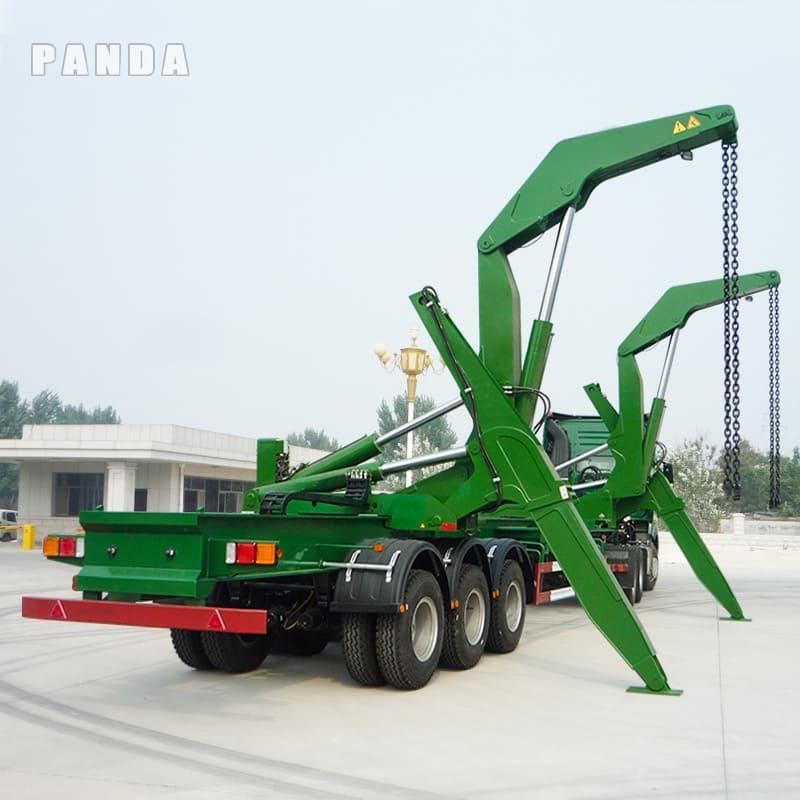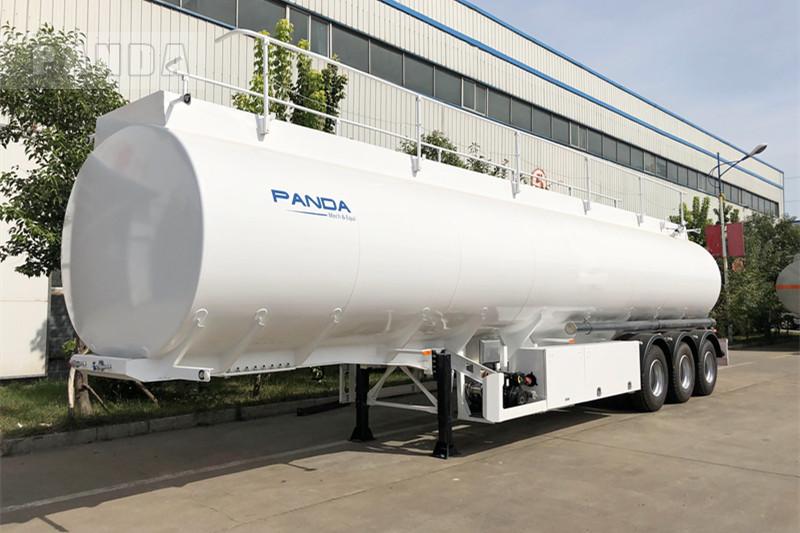Вы когда-нибудь задумывались, сколько весит 40-футовый полуприцеп? В порожнем состоянии он обычно составляет от 8 200 до 9 630 фунтов. Точный вес зависит от материалов и характеристик, использованных в конструкции. Этот вес играет большую роль в эффективности буксировки, топливной экономичности и соблюдении законных дорожных ограничений. Я убедился, что знание веса 40-футового гусеничного прицепа помогает мне безопасно буксировать и избегать неожиданностей на дороге. Все дело в том, чтобы планировать заранее и быть информированным.

Сколько весит 40-футовый гусеничный прицеп?
Средний вес 40-футового гусеничного прицепа
40-футовый гусеничный прицеп обычно весит от 8 200 до 9 630 фунтов в снаряженном состоянии. Вес зависит от используемых материалов и конструкции. Например, алюминиевые прицепы легче стальных.
Изменения веса в зависимости от типа прицепа
Вес 40-футового гусеничного прицепа зависит от его типа. Вот что я узнал:
- Бортовые Прицепы: Распространенные и гибкие. Они выдерживают нагрузку до 48 000 фунтов, отлично подходят для тяжелых грузов.
- Закрытые прицепы: Они весят больше из-за наличия стен и крыши. Они защищают груз, но снижают тяговое усилие.
- Специализированные прицепы: Такие прицепы, как рефрижераторные или со съемной гусеничной тележкой, имеют особые характеристики, которые изменяют их вес.
Почему знание веса важно для буксировки и безопасности
Знание веса вашего 40-футового гусеничного прицепа - залог безопасной буксировки. Вот почему это важно:
- Буксировочная мощность: Ваш автомобиль имеет ограничение по буксировке. Превышение этого предела может повредить двигатель или трансмиссию.
- Топливная эффективность: Более тяжелые прицепы потребляют больше топлива. Знание веса помогает мне планировать расходы на топливо.
- Правила дорожного движения: В штатах действуют строгие правила по весу. Соблюдение ограничений позволяет избежать штрафов и сохранить законность.
- Безопасность: Перегрузка может привести к несчастным случаям. Сбалансированный вес обеспечивает устойчивость прицепа во время движения.
Я всегда проверяю вес перед поездкой. Это небольшой шаг, который повышает безопасность и производительность.
Факторы, влияющие на вес 40-футового гусеничного прицепа
Когда я начал изучать прицепы, то обнаружил, что многие вещи влияют на их вес. Позвольте мне объяснить.

Материалы, используемые в строительстве (например, сталь против алюминия)
Материал, из которого изготовлен прицеп, значительно влияет на его вес. Сталь и алюминий - самые распространенные варианты, каждый из которых имеет свои преимущества и недостатки.
- Сталь: Он тяжелее, но очень прочный. Стальные прицепы хорошо справляются с тяжелыми грузами и сложной работой.
- Алюминий: Он легче, что облегчает буксировку и экономит топливо. Алюминий также противостоит ржавчине, поэтому служит дольше.
В некоторых прицепах оба материала используются творчески. Например, новый самосвальный прицеп весит около 9 680 фунтов. Он на 30% легче других, на 300% прочнее и перевозит на 12,5% больше груза. Это отличный показатель прочности и эффективности!
Размеры и конструктивные особенности прицепа
Размер и конструкция прицепа также влияют на его вес. 40-футовый гусеничный прицеп - большой, но его точный размер и характеристики могут увеличить или уменьшить вес.
- Длина и ширина: Большие прицепы весят больше, потому что в них используется больше материала.
- Конфигурация оси: Большее количество осей увеличивает вес, но способствует устойчивости и балансу груза.
- Дизайн рамы: Более прочные и детализированные рамы весят больше, но служат дольше.
Я всегда проверяю детали, прежде чем выбрать прицеп. Хорошая конструкция уравновешивает вес и производительность, облегчая буксировку.
Дополнительные функции и настройки (например, пандусы, ящики для инструментов или двойные оси)
Дополнительные функции делают прицепы более полезными, но и более тяжелыми. Вот некоторые распространенные дополнения:
- Рампы: Они помогают загрузить оборудование, но добавляют несколько сотен фунтов.
- Ящики для инструментов: Удобны для хранения инструментов, но увеличивают вес прицепа.
- Гидравлические системы: Они облегчают погрузку, но увеличивают вес.
- Двойные оси: Они улучшают устойчивость и грузоподъемность, но при этом увеличивают вес.
Когда я создаю трейлер, я думаю о том, что мне действительно нужно. Важно соблюсти баланс между характеристиками и весом. Слишком много лишнего может усложнить буксировку, поэтому я придерживаюсь простоты.
Совет профессионала: Всегда проверяйте предел буксировки вашего автомобиля, прежде чем добавлять дополнительное оборудование. Оставаться в пределах безопасных ограничений лучше, чем перегружать автомобиль.
Как измерить вес 40-футового гусеничного прицепа
Использование весов для грузовых автомобилей
Самый простой способ измерить вес 40-футового гусеничного прицепа - использовать коммерческие автомобильные весы. Я делал это несколько раз, и все довольно просто. Эти весы можно приобрести на стоянках грузовиков, станциях взвешивания и даже на некоторых свалках. Вот как я обычно это делаю:
- Заехать на весы: Я убеждаюсь, что весь прицеп стоит на платформе.
- Ознакомиться: Весы показывают общий вес, включая мой буксировщик.
- Вычтите вес автомобиля: Я проверяю вес своего автомобиля отдельно (без прицепа) и вычитаю его, чтобы найти вес прицепа.
Этот метод очень точный и быстрый. Кроме того, он позволяет проверить, не превышаю ли я допустимые нормы, прежде чем отправиться в путь.
Советы по выбору подходящего 40-футового гусеничного прицепа
Соответствие веса прицепа грузоподъемности вашего буксировщика
Важно подобрать вес прицепа в соответствии с грузоподъемностью вашего автомобиля. Если прицеп слишком тяжелый, он может повредить двигатель или тормоза. Я всегда проверяю предел буксировки своего грузовика, прежде чем выбрать прицеп. Это помогает мне избежать повреждений и оставаться в безопасности.
Вот что я делаю:
- Определите предел буксировки: Проверьте буксировочную способность автомобиля в руководстве или на наклейке.
- Сравнить вес: Добавьте пустой вес прицепа к грузу, который вы будете перевозить.
- Не превышайте лимит: Для безопасности оставьте немного места ниже максимальной вместимости.
Например, если мой грузовик может буксировать 15 000 фунтов, я выбираю прицепы с полной массой меньше этого значения. Это делает мои поездки плавными и безопасными.
Учитывая ваши потребности в перевозке и требования к нагрузке
Выбирая прицеп, подумайте о своих потребностях в перевозках. Прежде чем принять решение, я всегда обдумываю, что буду перевозить. 40-футовый гусеничный прицеп очень полезен, но тип груза имеет значение.
Вот почему мне нравятся прицепы с гусеницами:
- Они устойчивы, поскольку сцепное устройство располагается над задней осью грузовика. Это уменьшает раскачивание.
- Они перевозят более тяжелые грузы, чем прицепы с бампером. Я использовал свои для перевозки автомобилей и оборудования без проблем.
- Их конструкция оставляет место в багажнике для дополнительных вещей.
Если я перевожу легкие предметы, я выбираю прицеп с меньшей грузоподъемностью. Для тяжелых грузов я выбираю более прочную модель с усиленными деталями. Знание своих потребностей поможет вам выбрать лучший прицеп для работы.
40-футовый полуприцеп весит От 8 200 до 9 630 фунтов в порожнем состоянии. Он может буксировать до 25 000 фунтов под нагрузкой. Вес зависит от материала, размера и характеристик. Стальные прицепы прочные, но более тяжелые. Алюминиевые прицепы легче и экономят топливо.
Совет по безопасности: Соответствуйте весу прицепа пределу буксировки вашего автомобиля. Превышение может стать причиной аварии, особенно в плохую погоду.
Вопросы и ответы
Какой максимальный вес может выдержать 40-футовый гусеничный прицеп?
40-футовый гусеничный прицеп может выдержать 25-35 тонн. Точное количество зависит от конструкции, материалов и осей. Всегда проверяйте данные производителя, чтобы не превышать безопасные пределы.



